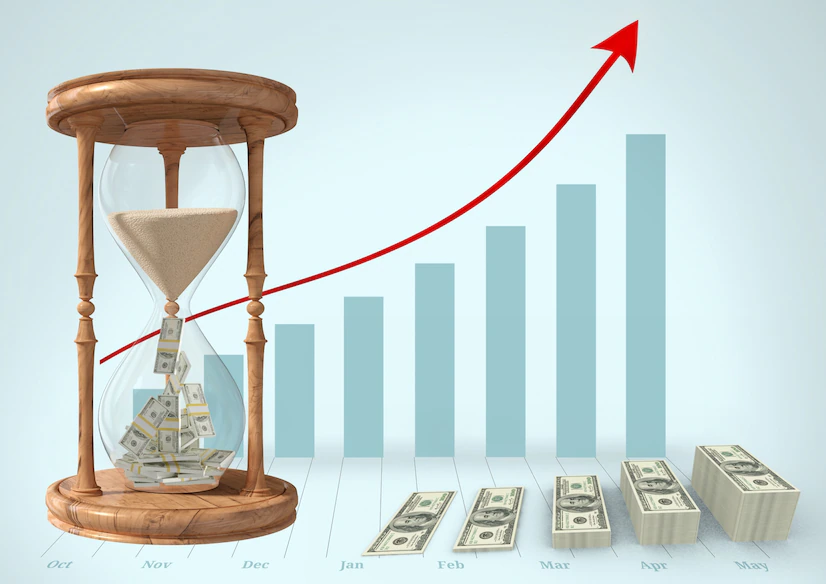Cd Laddering Strategy: How It Can Maximize Your Savings

In common terms, CD laddering indicates an economic strategy that includes investing in CDs. Certificates of deposit have maturity dates that are not steady. The CD refers to a time deposit that various credit unions and banks offer. Moreover, it pays a preset interest rate over a specified period of time. CD laddering is designed to balance the benefits of greater interest rates provided by long-term CDs with the liquidity and flexibility provided by shorter-term CDs.
CD laddering is considered a conservative investment strategy suitable for individuals looking for a low-risk approach to saving and earning interest on their funds. It provides some level of liquidity while still offering the benefits of longer-term CDs.
How Does It Work
Here’s how CD laddering typically works:
- Divide your investment amount: You use the equal portions trick to divide your total investment.
- Purchase CDs with different maturity dates: With the divided amount, one can invest in various CDs, all having varying terms. For example, you might buy CDs with maturities of 1 year, 2 years, 3 years, etc.
- Staggered maturity dates: Each CD in your ladder has a different maturity date, so as each CD matures, you have the option to reinvest it or take out the funds without penalty.
- Reinvestment or withdrawal: When a CD gets matured, you can choose to reinvest the funds into a brand new CD having a longer-term and potentially higher rate of interest or withdraw the money for any immediate needs. By reinvesting, you continue to maintain the ladder structure.
Cd Laddering Example
Let’s consider an example of CD laddering with $1,000 invested in CDs with maturity periods of 3 months, 6 months, 9 months, and 12 months. Here’s how it could be structured:
- CD 1: 3-month CD – $1,000
- CD 2: 6-month CD – $1,000
- CD 3: 9-month CD – $1,000
- CD 4: 12-month CD – $1,000
After the initial investment, you’ll have a CD maturing every 3 months. Once a CD matures, you have the option to reinvest it or withdraw all your funds according to your financial needs. Here’s how the process would look over time:
- After 3 months:
- CD 1 matures. You have the option to reinvest the $1,000 in a new 12-month CD or extract the funds.
- CD 2 is now a 3-month CD, with a remaining maturity of 3 months.
- CD 3 is now a 6-month CD, with a remaining maturity of 6 months.
- CD 4 is now a 9-month CD, with a remaining maturity of 9 months.
- After 6 months:
- CD 2 matures. You have the option to reinvest the $1,000 in a new 12-month CD or withdraw your funds.
- CD 3 is now a 3-month CD, with a remaining maturity of 3 months.
- CD 4 is now a 6-month CD, with a remaining maturity of 6 months.
- After 9 months
- CD 3 matures. You have the option to reinvest the $1,000 in a new 12-month CD or withdraw your funds.
- CD 4 is now a 3-month CD, with a remaining maturity of 3 months.
- After 12 months
- CD 4 matures. You have the option to reinvest the $1,000 in a new 12-month CD or retain the money.
By following this CD laddering strategy, you’ll have a CD maturing every 3 months, providing you with regular access to your funds. You can decide whether to reinvest the matured CDs for longer periods to potentially earn higher interest rates or acquire the funds for any immediate needs. This way, you can maintain a balanced approach between liquidity and maximizing returns.
Benefits And Drawbacks
CD laddering offers several benefits and drawbacks that are important to consider when deciding whether it’s the right strategy for you. Let’s explore them:
| Benefits | Drawbacks |
| Diversification | Lower long-term rates |
| Liquidity | Interest may decrease |
| Earnings potential | Limited access to funds |
| Risk mitigation |
Benefits Of CD Laddering
- Diversification: By investing in CDs with staggered maturities, you distribute your funds across different time periods. This diversification reduces the impact of interest rate fluctuations and ensures that you have access to a portion of your investment at regular intervals.
- Liquidity: CD laddering provides periodic liquidity since a CD matures at regular intervals. This allows you to access a portion of your funds without penalties or withdrawal restrictions. It can be beneficial if you have short-term financial needs or want to take advantage of higher interest rates in the market.
- Earnings potential: With a CD ladder, you have the opportunity to take advantage of potentially higher interest rates over time. As each CD matures, one gets the ability to reinvest it at prevailing rates, potentially earning higher returns compared to locking in your funds in a single long-term CD.
- Risk mitigation: By investing in shorter-term CDs, you reduce the risk associated with locking up your funds for an extended period. If interest rates rise, you can reinvest your maturing CDs at higher rates rather than being stuck with a lower rate for a long duration.
Drawbacks Of CD Laddering:
- Lower long-term rates: While CD laddering provides flexibility, it may result in lower overall interest rates compared to investing in a single CD. This is because some CDs, such as 9 months and 12 months, typically offer higher rates compared to 3-month CDs.
- Interest may decrease: If interest rates decline after you’ve established your CD ladder, you may miss out on potentially higher returns available in the market. Since your funds are tied up in longer-term CDs, you won’t be able to take advantage of better rates until the shorter-term CDs mature.
- Limited access to funds: While CD laddering provides periodic liquidity, it may not be as flexible as other savings or investment options. Withdrawing funds from CDs before their maturity dates may result in penalties or forfeiting accrued interest.
Things To Consider Before Investing
Before implementing a CD laddering strategy, there are several factors you should consider. Here are some important things to keep in mind:
- Financial Goals: Determine your short-term and long-term financial goals. CD laddering is generally suitable for conservative investors looking for capital preservation and steady income. Assess whether this strategy aligns with your goals and risk tolerance.
- Interest Rate Environment: Evaluate the current interest rate environment. If interest rates are expected to rise, it may be beneficial to have shorter-term CDs on your ladder, as you can reinvest them at higher rates. Conversely, if rates are expected to decline, locking in longer-term CDs may be more advantageous.
- Liquidity Needs: Assess your liquidity requirements. CD laddering provides periodic access to funds as CDs mature. However, it’s important to ensure that the ladder structure aligns with your anticipated cash flow needs. Consider your short-term financial obligations and emergencies to determine the appropriate ladder length.
- Penalty Fees: Understand the penalty fees associated with early withdrawal. If you need to access funds before a CD matures, you may incur penalties that could erode your earnings. Familiarize yourself with the terms and conditions of the CDs you plan to invest in to make informed decisions.
- Market Conditions: Stay informed about the general market conditions and economic trends. Monitor interest rate movements and economic indicators to make informed decisions about reinvesting matured CDs. This can help you take advantage of favorable interest rate environments.
- Diversification: Consider diversifying your investments beyond CDs. While CD laddering can be a conservative approach, it may be beneficial to have a diversified portfolio that includes other investment vehicles like stocks, bonds, or mutual funds to potentially enhance your overall returns.










